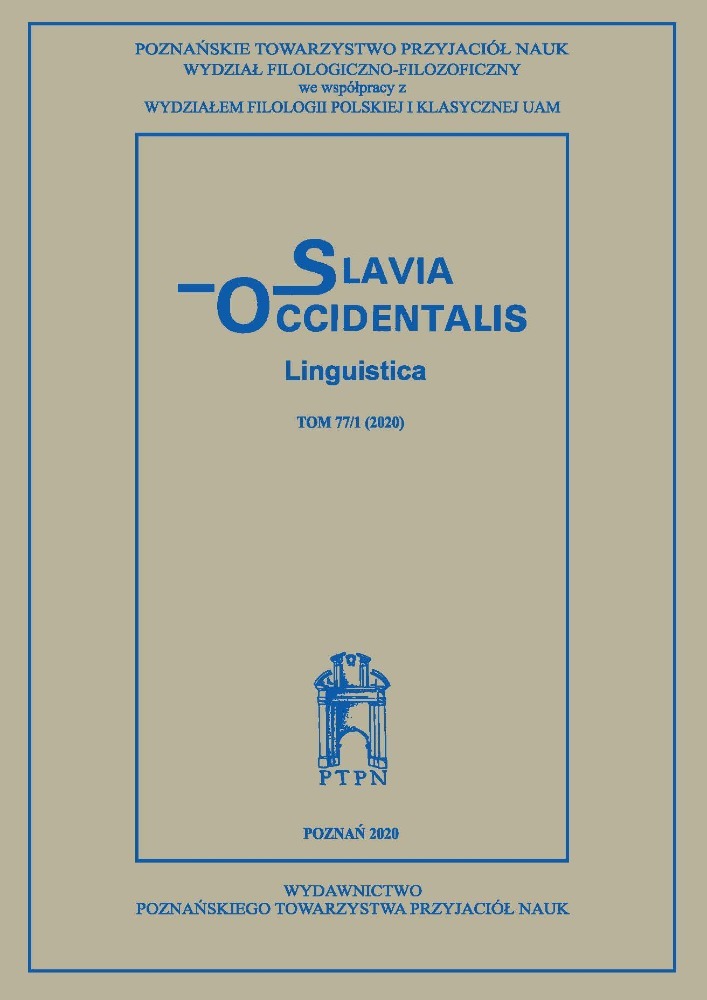Abstrakt
A majority of the earlier scholarly publications (literary and linguistic) contain negative assessments of the Czech language from the 17th and 18th centuries. This valuation is in accordance with the political, social, religious and cultural developments in Bohemia after the battle of White Mountain (Bílá hora) on 8 November 1620. Following the battle, the Habsburg Monarchy was established and Bohemia was yet again subjected to the Catholic Church. The function of the Czech language was limited with German becoming the main language spoken by the Bohemian aristocracy and city dwellers. German was the official language and, along with Latin, the language of science. As a result of the functional restrictions, Czech books were printed in limited literary fields, especially religious, historical and practically-oriented texts. The language in which they were written was described as degraded, unstable and incorrect. It was connected with the decline of the standard language, deformed by dialectisms, neologisms and an enormous number of loan words from German. However, is this interpretation of the Czech language from the 17th and 18th centuries correct? I have analysed over 100 prints from the 16th to the 18th centuries, focusing on four phonological phenomena: prothetic v-, dipthongisation ú- > ou- and ý (í) > ej and the change é > í. These changes occurred in texts from the 16th century (or even earlier), then some of them were repressed (ej, í in word ending, prothetic v-) or fixed as a part of Czech print (initial ou-, v- by words stabilized with this nonetymological consonant). It is evident that 1) there was continuous development instead of discontinuity, 2) the earlier negative estimation of the Czech language after 1620 was inaccurate. It is imperative to investigate the Czech language from a historical perspective in detail, without prejudice or ideology.
Bibliografia
Český jazykový atlas 4, 2002, Praha. K dispozici je též elektronická verze: https://cja.ujc.cas.cz/e-cja/.
Dittmann R., 2019, Protetické v ve Smolné knize velkobítešské (1556‒1636), „Listy filologické” 142, s. 369-406.
Dobrovský J., 1792, Geschichte der Böhmischen Sprache und Litteratur, Praha.
Dvořák E., 1970, Vývoj přechodníkových konstrukcí ve starší češtině, Praha. Flajšhans V., 1924, Náš jazyk mateřský, Praha.
Hausenblas K., 1958, Vývoj předmětového genitivu v češtině, Praha.
Havránek B., 1979, Vývoj spisovného českého jazyka, Praha.
Janečková M., 2009, K jazyku českého baroka, Praha.
Jungmann J., 1825, Historie literatury české aneb soustavný přehled spisů českých, s krátkou historií národu, osvícení a jazyka, Praha.
Kamiš A., 1974, Slovní zásoba české publicistiky 18. století, Praha.
Komárek M., 2012, Dějiny českého jazyka, Brno.
Kosek P., 2017, Periodizace vývoje češtiny, in: CzechEncy – Nový encyklopedický slovník češtiny, eds. P. Karlík, M. Nekula, J. Pleskalová, Brno, online: <https://www.czechency.org/>.
Kosek P., 2003, Spojovací prostředky v češtině období baroka, Brno.
Koupil O., 2007, Cesty k dějinám češtiny, „Listy filologické” 130, s. 144-147.
Porák J., 1983, Humanistická čeština. Hláskosloví a pravopis, Praha.
Stich A., 1991, O počátcích moderní spisovné češtiny, „Naše řeč” 74, s. 57-62.
Šimečková M., 2016a, Hláskosloví v češtině 16.-18. století, Brno. [Nepublikovaná disertační práce.]
Šimečková M., 2016b, Příspěvek k historickému vývoji protetického v- u českých oikonym, „Acta onomastica” 55, s. 290-296.
Šimečková M., 2013, Proteze v hospodářských příručkách 16. století, „Listy filologické” 136, s. 343-363.
Šlosar D., Večerka R., Dvořák J., Malčík P., 2009, Spisovný jazyk v dějinách české společnosti, Brno. [3., oprav. a dopl. vyd.]
Utěšený S., 1955, Poznámky k dnešní situaci české historické dialektologie, „Slovo a slovesnost” 16, s. 146-153.
Válka J., 1968, Problém baroka jako kulturní a historické epochy, in: O barokní kultuře, Brno, s. 11-23.
Vintr J., 1992, Jazyk české barokní bible Svatováclavské, „Wiener Slavistisches Jahrbuch” 38, s. 197-212.
Voit P., 2006, Daniel Adam z Veleslavína, in: Encyklopedie knihy: starší knihtisk a příbuzné obory mezi polovinou 15. a počátkem 19. století, Praha, online: <https://www.encyklopedieknihy.cz/ >.
Weingart M., 1918, Vývoj českého jazyka, Praha.

